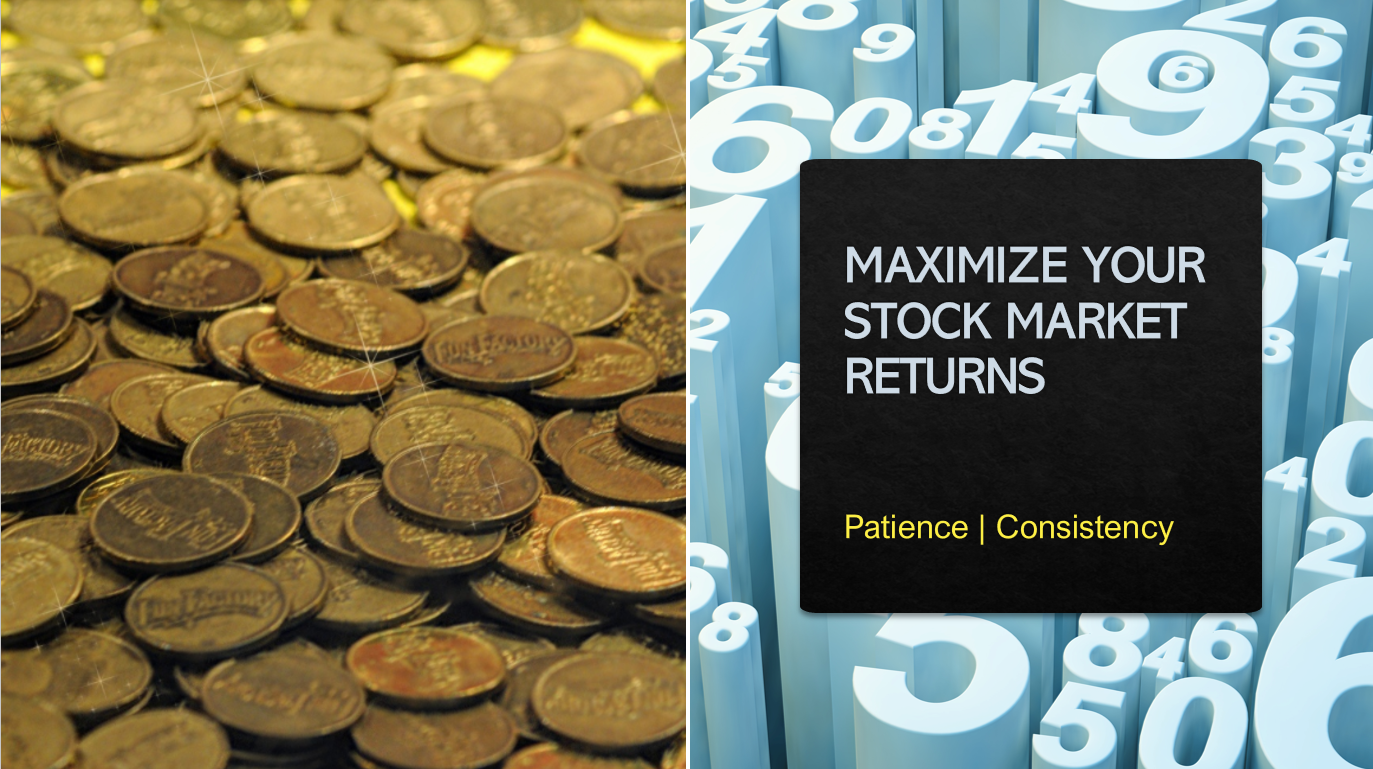Equity investing tempts masses with lucrative returns. Few believe making profits is easy. People start investing without a plan and await an unpleasant surprise. Here is our attempt to provide the top five ways to enhance investment returns. Here is how you can start your investment journey. We will understand how early and continued investments helps you maximize returns and deliver better returns vs risk-free assets (e.g. bank fixed deposits).
1. To enhance returns, start early and stay invested
It would be best to begin the investment journey by drafting an investment policy statement to understand your own goals and expectations. Investing in equity is a long-term approach, and outlay must be as per a broader investment strategy. Below steps will help you get started:
- List financial goals and objectives
- Make a summary of your assets and liabilities
- Determine your risk appetite (more details further in this article)
- Finalize asset allocation (proportion of investment in equity, bonds, property, gold, etc.) based on your risk tolerance
- Identify a way to invest – direct investment or indirect investment (e.g. mutual funds)
- Determine modus operandi – investment via bank websites, agent and third-party websites, etc.
You invest in equities and seek returns by assuming a certain level of risk. The decision to invest in stocks depends on your risk appetite. Factors like age, number of dependents, income level (current and expected), current portfolio value, assets, liabilities, etc., help you determine your risk tolerance or risk appetite. Market investments are subject to market risks, which essentially means high returns entail taking an increased risk. Taking a higher risk does not guarantee higher returns.
Returns are measured relative to the risk you undertake and not in isolation. Returns are comparable to benchmark returns. There are several examples of benchmarks, like (1) Peer group companies in similar sectors, (2) market index like Nifty or BSE, (3) bond investments, or (4) risk-free bank fixed deposits.
Let’s learn with an example
You own a share that grew 11% last year – it appears to be a decent return when looked at in isolation. Now, assume the bank fixed deposit interest rate was 10%, peer companies share price grew 16%. The Nifty index rose 13% during the same period. Immediately, you realize that your stock has not yielded a good return. Therefore, you should always measure stock performance relative to the right benchmark. There are a few methods to measure risk-adjusted returns (e.g. Sharpe ratio), but that isn’t very easy.
Equity investing involves placing your trust in the unknown. That essentially means you must strike a balance between partaking risk and securely growing your portfolio. Risk is highly individualized, and the factors mentioned above will help you estimate your risk tolerance.
Your risk appetite helps you determine the right investment, and choices can differ for different people under the same circumstances. Assume a situation where:
- The bank interest rate is 10% p.a.
- Stock A earns a 25% return with high volatility
- Stock B earns a 15% return with low volatility
The right investment option is different for each investor type based on specific circumstances:
| Investor age | Earning age left | Savings & cash | Risk Appetite | Preference |
| 62 years | Retired | Low to average | Low | Option I |
| 40 years | 20 years | Average | Medium | Option III |
| 30 years | 30 years | High | High | Option II |
2. Be consistent to enhance returns
Stock market performance depends on various factors, and one cannot comprehend all. Therefore, instead of trying to find low spots, invest consistently. A popular investment methodology is to invest an equal amount of money at pre-decided intervals in a stock. This method not only ensures you save that money; you also average the cost of ownership throughout the investment horizon.
A simple time-based investment method can help you earn higher returns vs risk-free investment (bank fixed deposit). Assume you invest Rs15,000 on June 30th each year in the Nifty index.
- Index value in June 1995 was 961
- Index value in Sep 2020 is 11,248
- June 1995 investment of Rs15,000 grows to become Rs175,518 in Sep 2020
- Investment is made on 30th June each year, and value changes with the index
- A total sum of Rs390,000 gets invested in 25-years (1995 to 2020)
- Investment value is Rs1,975,203, or 5.06x the total principal invested
- Investment in bank fixed deposit at 8% interest rate p.a. would have grown to 3.13x the principal invested
*Source of index values is www.nseindia.com
What does this illustrate?
Firstly, the above example illustrates that a simple strategy of investing an equal amount of money on a fixed day for 25-years has yielded 1.7 times better return vs risk-free return. The date of investment (June 30th) is randomly selected. Even if the date was different, we believe the outcome would have been similar. Studies confirm that monthly investment return higher returns.
Secondly, the example above is according to direct investing, where you invest in a stock. Passive investing through mutual funds would also deliver a similar outcome, net of expenses like the commissions, etc. If you do not feel equipped enough to make investing decisions, passive investing is an alternative.
Thirdly, survivor bias is a crucial point to consider as we use index value in the above example. An index reflects existing stock at that point of time – but does not consider the ones that got excluded.
And finally, it is vital to note that stock prices change as a result of corporate actions. Some actions are recurring, such as dividends, while others are non-recurring such as bonus, split, buy-back, etc. These non-recurring actions cause a disproportionate impact on the share price and have a strong bearing on your returns.
3. Find sweet spots to enhance investment returns
Within the ambit of following a consistent investment strategy, you can still substantially improve your stock performance. Arguably you can even double your portfolio return by following a few additional steps. Higher returns are an outcome of deeper understanding of the market and its movements.
In the above example, if you would have invested additional sums on June 30th in a few years, the return would have been 7x the principal value.
Also read about lumpsum investing in my article here – Is SIP a better option than one time investment?
4. Short term view is not rewarding
Continuing with the same investment strategy, if you began investing in 2005, your stock value would have been 2.1x the amount invested. Marginally higher than a return from the bank fixed deposit which would have been 1.9x the principal amount. If you started investing in June 2015, the investments’ market value would have been 1.2x the amount invested, just like the return from a bank fixed deposit. You get no return to assume risk by investing in a stock.
5. Other vital considerations
Securities transaction taxes (STT) is applicable on the transaction value. Further, based on the holding period and your tax circumstances, you may be liable to pay short-term or long-term capital gains tax. Therefore, taxes form an essential consideration. Few other considerations to help you maximize returns:
- Do not time the market
- Minimize costs (commissions, brokerage, etc.)
- Take the right amount of risks
- Avoid overreacting to market fluctuations
- No one has that third eye to spot winning bets steadily
- Invest post due diligence and thereafter trust your investments
- Never get emotionally attached to investments
- Stay connected with the market and economic updates
- Look for sweet spots to magnify your portfolio returns
- And most important, have patience and never expect faster returns
All the investments are subject to market risks, and equity investing a vast subject that may require expertise. Long-term and consistent investments may still deliver lower than expected returns or even negative returns if the stock market enters a long-time bearish phase.
——————————————————————————————————–
The author of this article is a senior finance professional with over fifteen years of work experience in corporate finance and has an affinity towards the subject of personal finance and investment management. Please leave your comment or share thoughts on this article via email at decodefinance.in@gmail.com. For more articles, please visit the website www.decodefinance.in.
Disclaimer:
The article is based on the author’s knowledge, experience, and understanding of the subject. Any views, thoughts, and opinions expressed in the text belong solely to the author, and not necessarily to the author’s employer (past or current), organization, committee, or other group or individual.
Under no circumstances the author shall be liable for any views or analysis expressed in this note. Further, the views expressed are not binding on any authority or Court. Readers are advised to consult their financial advisor for advice for their specific case.





Nice articles
Very helpful
Very helpful and informative…